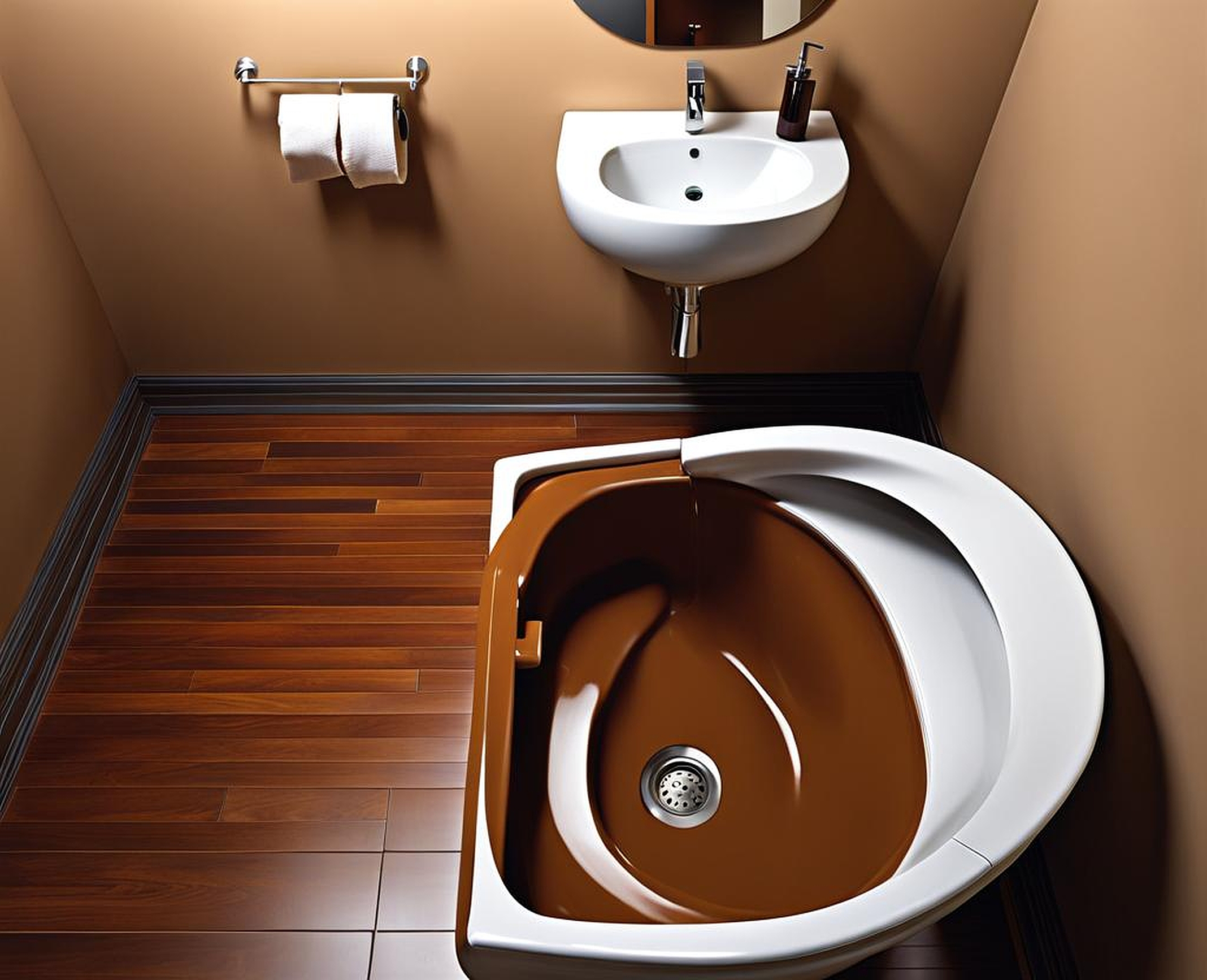Discovering brown water in your toilet or sink can be an unsettling experience, leaving you puzzled and concerned about the potential causes and implications. Whether it’s a sudden discoloration or a persistent issue, addressing brown water problems promptly is crucial for maintaining a healthy and hygienic living environment.
Causes of Brown Water in Toilets and Sinks
The appearance of brown water in your plumbing fixtures can stem from various sources, ranging from harmless mineral deposits to more serious issues within your water supply system or plumbing infrastructure. Some common causes include:
- Rust accumulation: Over time, metal pipes can corrode, leading to rust buildup that discolors the water, particularly in older homes with aging plumbing systems.
- Sediment disturbance: A sudden shift or disturbance in the water supply lines can stir up sediments, causing the water to appear brown or cloudy.
- Municipal water issues: Occasionally, problems with the municipal water supply, such as a water main break or maintenance work, can temporarily discolor the water flowing into your home.
- Well water contamination: If you rely on a private well, the brown color may indicate the presence of iron, manganese, or other minerals in the groundwater.
Identifying the root cause is essential for determining the appropriate course of action and addressing the problem effectively.
Identifying the Source: Plumbing vs Water Supply Issues
To pinpoint the source of the brown water issue, you’ll need to conduct a thorough investigation. Start by checking if the discoloration is localized to a specific fixture or if it’s present throughout your home’s plumbing system. If it’s isolated to one fixture, the problem likely lies within that particular plumbing line or fixture itself.
However, if multiple fixtures are affected, the issue may be more widespread, potentially stemming from the main water supply line or even the municipal water source. In such cases, it’s advisable to contact your local water authority to inquire about any ongoing maintenance work or reported water quality issues in your area.

Additionally, you can perform a simple test by collecting water samples in a clear glass or white container. Allow the water to settle, and observe if the discoloration dissipates or if sediments remain at the bottom. This can provide valuable clues about the nature of the problem and guide your next steps.
Potential Health Risks and Safety Concerns
While brown water may not necessarily pose an immediate health risk, it’s essential to address the issue promptly to prevent potential long-term consequences. Prolonged exposure to discolored water can lead to various health concerns, such as gastrointestinal issues, skin irritations, or even more severe illnesses, depending on the contaminants present.
Additionally, the presence of brown water can be an indicator of a more significant underlying problem within your plumbing system or water supply. Neglecting to address the issue could potentially lead to further damage, costly repairs, or even water contamination that compromises the safety of your household.
It’s crucial to exercise caution when dealing with brown water, especially if the discoloration is accompanied by an unpleasant odor or visible debris. In such cases, it’s advisable to avoid consuming or using the water until the issue has been resolved and the water quality has been thoroughly tested and deemed safe.
Troubleshooting Steps for Brown Water Problems
If you encounter brown water in your toilet or sink, there are several troubleshooting steps you can take to address the issue:
- Flush the system: Start by running all the faucets in your home for several minutes to flush out any sediments or debris that may be causing the discoloration. This can sometimes resolve minor, temporary issues.
- Check external water sources: If the problem persists, check with your neighbors to see if they’re experiencing similar issues. This can help determine if the problem is localized or related to the municipal water supply.
- Inspect water filters: If you have water filters installed, check and replace them if necessary, as clogged or expired filters can contribute to water discoloration.
- Test for contaminants: Consider having your water tested by a professional laboratory to identify any potential contaminants or mineral levels that may be causing the discoloration.
- Inspect plumbing systems: If the issue seems localized, thoroughly inspect your plumbing system for any signs of corrosion, leaks, or other issues that could be causing rust or sediment buildup.
Depending on the severity and source of the problem, you may need to seek professional assistance from a licensed plumber or water treatment specialist to resolve the issue effectively.
Once you’ve identified and addressed the immediate cause of the brown water problem, it’s essential to implement long-term solutions and preventative measures to avoid future occurrences. These may include:
- Replacing aging pipes: If your plumbing system is outdated, consider replacing corroded or damaged pipes with newer, more durable materials to prevent rust buildup and water discoloration.
- Installing water treatment systems: Depending on your water source and quality, installing a whole-house water treatment system, such as a sediment filter or water softener, can help remove contaminants and improve water clarity.
- Routine maintenance: Regularly flushing your plumbing system and inspecting water heaters, filters, and other components can help prevent sediment buildup and catch potential issues early on.
- Water testing: Periodic water testing can help monitor your water quality and identify any changes or emerging contaminants that may need to be addressed.
By taking a proactive approach and implementing preventative measures, you can enjoy clean, clear water flowing from your taps and minimize the risk of future brown water issues in your home.
Remember, addressing brown water problems promptly is essential not only for maintaining a pleasant and hygienic living environment but also for safeguarding your health and the longevity of your plumbing system.